Types of Heavy Equipment and Plant
Table of Contents
Bulldozer
Bulldozer are large heavy plants that are a common site on construction sites. They are large machines that travels on tracks and is equipped with a metal blade which is used in road construction, material handling, levelling, and many other types of work.
The types of bulldozers are the following:
- Wheel Bulldozer – This is larger than a crawler and it more maneuverable. This heavy plant is good for moving materials, soft surfaces and leveling.
- Mini Bulldozer – This is a smaller bulldozer, and this heavy equipment is good for working in tight spaces/areas for grading and clearing areas.
- Bulldozer Blades (S-blades) – This blade is good for fine grading. It has no lateral curve and no side wings.
- Bulldozer Blades (U-blades) – This is a tall and very curved blade, and best used for handling material, hauling for soft to medium soil.
- Bulldozer Blades (S-U-blades) – This is a combination between the S and U blade, with less curvature and smaller side wings. It is good for moving and pushing heavy materials.
The following parts that make up a bulldozer are identified below:
- Ripper
- Final Drive
- Cab
- Tracks/Tires
- Engine
- Push Frame
- Blade
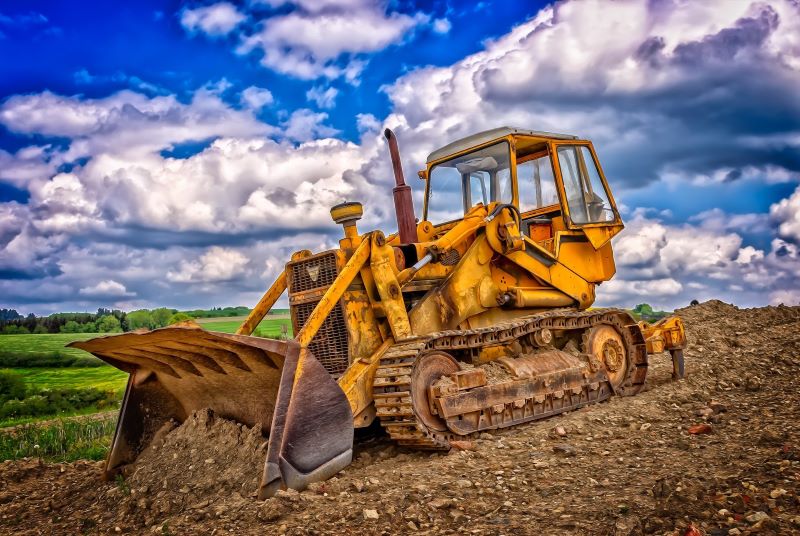
Tractor
Tractors are heavy equipment vehicles which are a common sight on farms and construction sites. They are primarily used for agricultural tasks, but it can also be used for hauling machinery and on mining or construction. They use similar diesel engines like bulldozers, but they move very slow in general (slow traction).
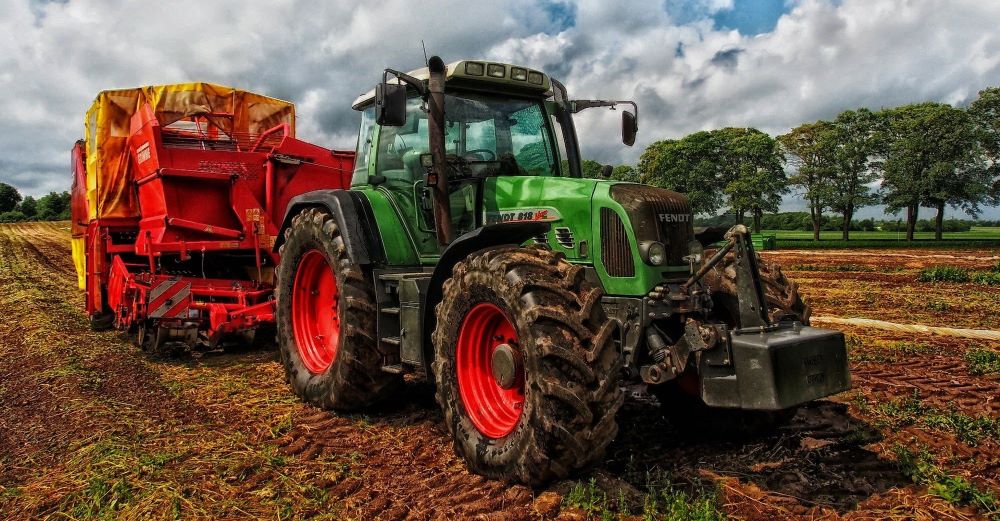
Grader
Another type of heavy equipment is a ‘Grader’. This plant is used for producing flat surfaces, grade the ground, scarify layers and compact grounds after excavators and bulldozers have been used on site. The angle of the blade can be adjusted to achieve the required ground finish.
Graders are commonly used in road construction, to prepare a flat surface for the base before the asphalt is placed.
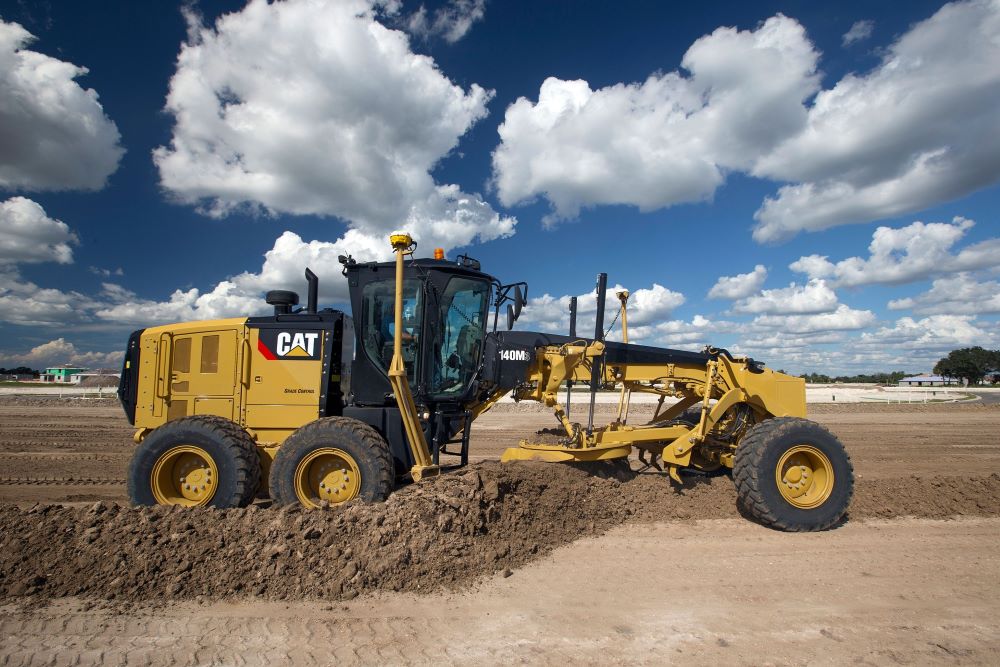
Excavator
Excavators are heavy vehicles, made up of a boom, dipper, bucket, arm, hydraulic cylinder, engine, cab on a rotating platform, track frame and counterweight. They are also called diggers and JCB’s and are used for the following applications:
- Construction
- Digging of trenches and holes for foundations
- Forestry and mining
- Demolition
- Material Handling
- Dredging rivers
- Heavy Lifting
There many types of excavators such as track and wheel excavator, mini excavator, which are used for different applications as mentioned above. The types of excavators are listed below:
- Dragline excavator
- Crawler excavators
- Suction excavators
- Long reach excavator
- Mini excavator
- Wheeled excavator
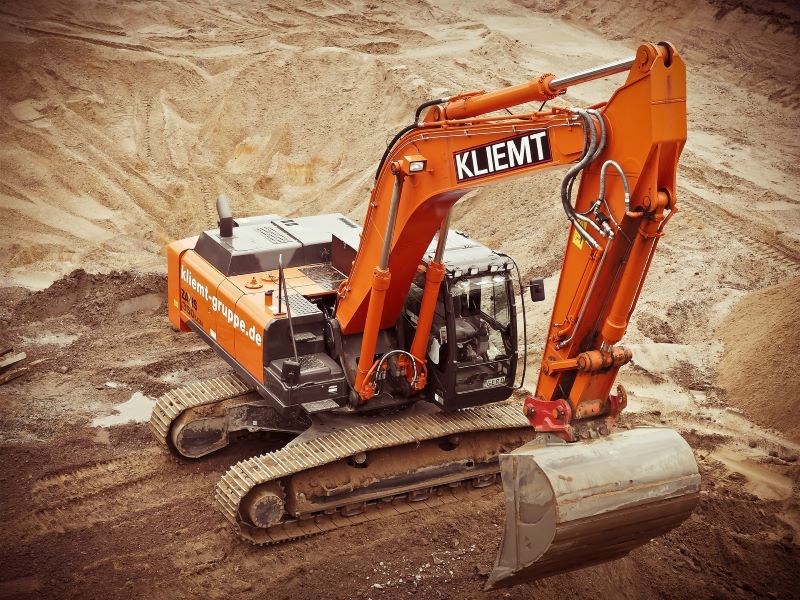
Dragline Excavator
Dragline Excavators is another piece of heavy equipment used on a construction site. It is a large bucket excavator consisting of a large bucker, suspended from a boom with wire ropes. It is controlled by a system of pulleys, chains and ropes that hoist the bucket.
The large bucket will be dragged along the ground, digging up material, which is scoped up and placed elsewhere. This is commonly used for surface mining, strip mining and these types of heavy vehicles can weigh around 8000 tonnes
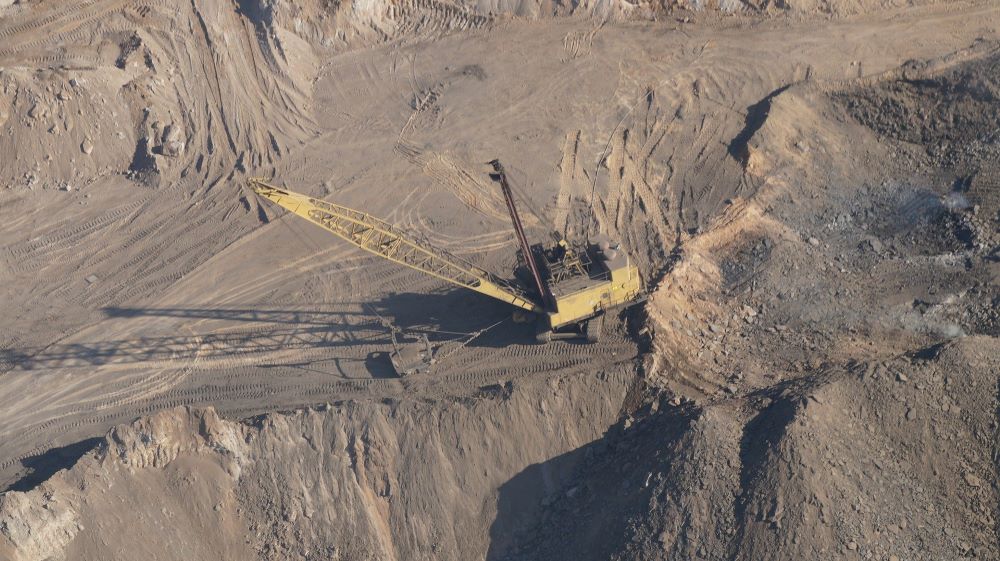
Trencher
A trencher is a heavy vehicle used to dig trenches on construction sites (excavate soil). This creates an opening that allows the laying of pipes, electrical cables and drainage. There are different types of trenches such as wheel, chain and micro trenchers.
Chain trenchers resemble large chainsaws, which excavate the ground via a digging chain or belt. This is useful for larger trenches for electricity, drainage, water and gas mains. Wheel trenchers are used in harder soils and operates using a toothed metal wheel. a
Backhoe
A backhoe is a type of excavator attached with a digging bucket at the end of its arm/boom. It is connected/supported on a standard tractor. The boom is the section closest to the main body, and the section is attached to the bucked is called the dipper (dipper-stick). The term ‘backhoe’ corresponds to the way the machines digs the earth and it digs by drawing earth backwards.
Compactor
Compactors are a very common piece of heavy equipment which is used on construction sites. These machines are used to compact the soil and earth surface, which levels the top soil and increases the density of the compacted soil. There are three main types of compactors which are listed below:
- Vibrating plate compactors – vibrating plates are used create a downward force on the soil to increase the soil density. This is useful in areas where there is limited space for large rollers.
- Rammers/Jumping Jack – This delivers blows to the top of the surface soil and is commonly used to compact the backfill for trenches.
- Compactor Roller – there are smooth static, vibrating rollers and pnematic rollers.
- Smooth static rollers are also called road rollers and can be commonly seen on roads where they are used to compact and flatten asphalt roads. They have a noticeably large wheel drum at the front of the equipment.
- Vibrating rollers also use vibrations to achieve higher compacting levels (greater depth of soil is compacted)
- Pneumatic rollers have rubber tires instead of steel drums seen in static rollers. They are used for compacting soils containing coarse soil layers such as pavements.
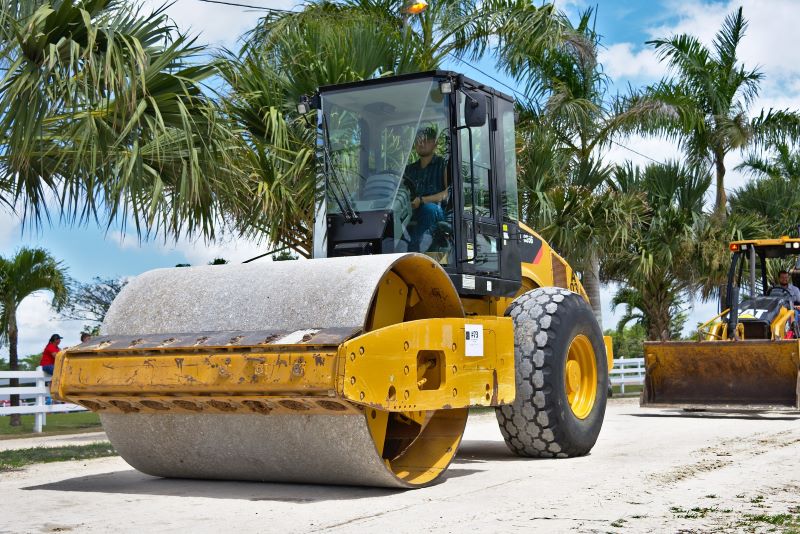
Scraper
Scraper Machines are a type of heavy vehicle that are used for earthmoving in an efficient manner. They are used in the construction, mining and agriculture industries and is useful for levelling areas on site. They cut into the soil using a vertically moveable hopper with a sharp horizontal front edge. When the hopper is filled with soil, it is them transported and placed elsewhere. The types of scrapers are listed bleow:
- Single engine wheeled scraper machine – this is very common and uses a bowl and an apron to move earthworks. However, this scraper type requires the trailer to be pushed in order to gain momentum to cut through tough soil (may increase costs.)
- Elevating Scraper machine – This is good for fine soils, top soils and other fine materials. It doesn’t require it to be pushed.
- Tandem scrapers – This has a separate tractor and scraper engine to provide greater power (additional momentum to cut soils).
- Tandem Push-Pull scraper – This is a dual engine scraper with a more powerful engine. This additional power allows the scraper to work in on tough soils.
- Pull type scrapers – This requires an additional trailer to be attached to the tractor to pull the vehicle. These are useful for farming projects.
Loader
Loaders is a type of heavy equipment that is a wheeled tractor with a wide square bucket attachment to moveable arms allowing the movement and loading of materials such as soil, rock, sand and others. There are various types of loaders such as a bucket loader, front loader, front-end loader, payloader, high lift, scoop, shovel skip loader, wheel loader.

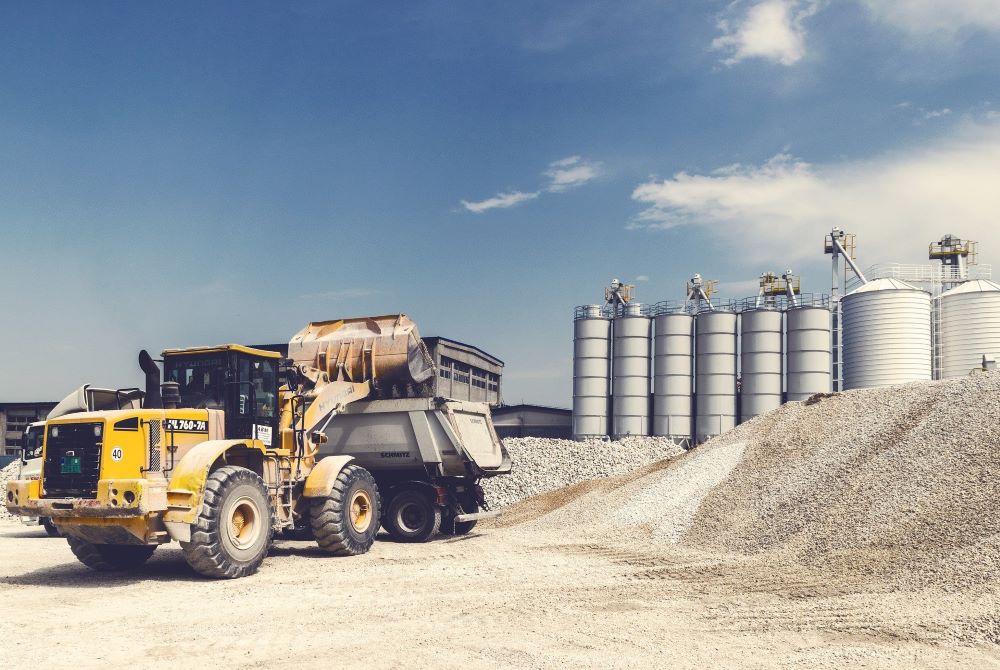
Tower Cranes
A common type of heavy equipment on a construction site are tower cranes. They consists of a steel latice tower, Jib with concrete counterweight blocks, cab at the top for the operator controls the crane and a trolley and hoist block that moves along the length of the jib. They are useful for lifting heavy materials such as concrete and steel (beams and trusses) to their required height.
Tower cranes can be either self-supporting, supporting static, travelling or climbing.
Self-supporting tower cranes rely on anchorage to a foundation (usually temporary piled foundation) at ground level. The lifting plan needs to be coordinated with the design to determine the most appropriate location for the crane, as the lifting capacity depends on the radius at the end of the jib.
Static supporting tower cranes is similar to the self supporting tower with an anchorage into a temporary foundation at ground level, but the tower is also tied to the building at interbals provideing stabilyt. The structure needs to be checked in the temporary states to see whether the design can allow for additional loadings.
Travelling or rail mounted tower cranes are useful for sites where static tower cranes cannot be erected. The tower crane is supported at the base with precast concrete blocks and is mounted on a railway track allowing on the site.
A climbing tower crane are used for tall structures where the crane is erected within the structure itself. The tower crane is fixed to the foundation and the level raises at the structure height increases. A lot of coordination is required if an internal tower crane is required.
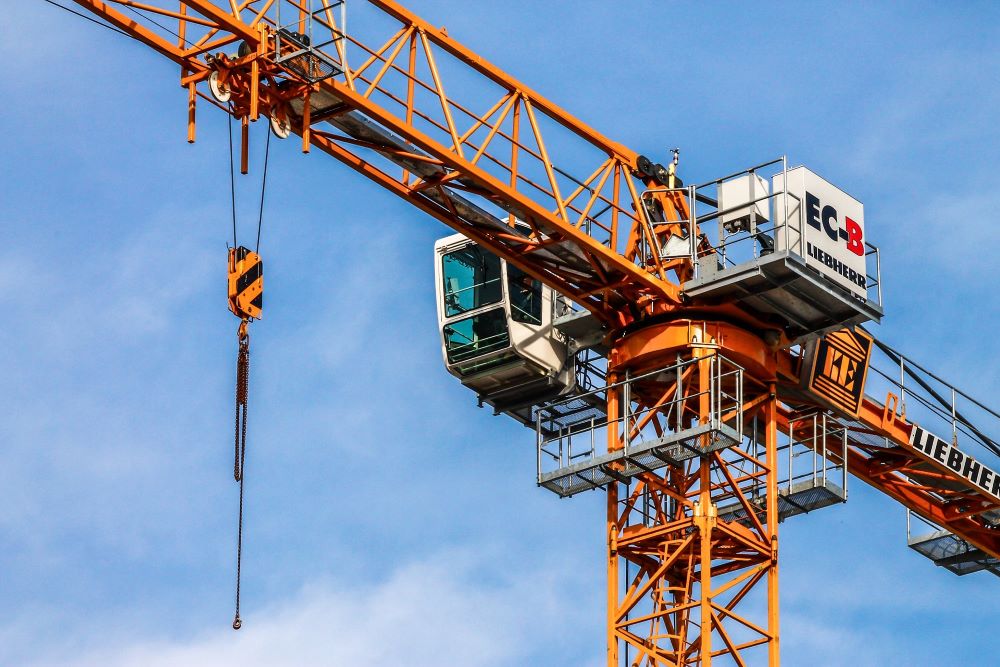
Mobile Cranes
Mobile cranes are a commonly used heavy plant on construction sites during the erection of superstructure frames. They can move on site, making them highly flexible and are mobile wheeled, truck-mounted, track mounted or gantry based.
The crane can lift large loads of concrete or steel beams which is attached to a wire rope/sheaves suspended from a hook connected to the boom. The crane is controlled by the operator whom is in the cab of the crane.
They can lift loads between 3-75 tonnes depending on the type of crane used, and the lifting radius of the materials. A lift plan should always be in place on site, detailing the lifting arrangement and the maximum loads lifted by the crane, so the correct crane type can be selected.
This heavy plant is supported by outriggers, resulting in point loads on the ground. Adequate foundation or timber ekki mats need to be designed to take this point loads. The ground needs to be checked against these large point loads or it could result in large bearing pressures leading to bearing failure.
It is important to note that many crane failures occur due to soft spots in the ground and improper procedures on site. The soft spots are areas of weak ground that may not be detected, but can lead to ground failure and the crane overturning.

Pavers
A type of heavy construction equipment are pavers, which are a common site in roadworks. They are used to lay asphalt on roads, bridges, parking bays, motorways and other areas. It lays asphalt on the road and is evenly distributed before being slightly compacted. A roller is then used to fully compact the asphalt on the road.
Telehandlers
Telescopic handlers are heavy vehicles that are commonly used in the construction and farming industry. They are also known as telehandlers. They are similar to forklifts, but has a telescopic boom that extends forwards and upwards. The end of the boom can be attached with a bucket, hoist, man basket and other accessories that allow use for difference scenarios.
Feller Bunchers
Another type of heavy equipment is a Feller Buncher which is used in forestry to cut down large trees. It is a tracked/wheeled heavy vehicle which has an attachment that can cut down and gather trees before felling.
Dump Trucks
Dump trucks (also referred to as dumper truck or tipper truck) is used for transporting large quantities materials on site (sand, gravel and demolition waste) to a dump yard. These heavy vehicles are equipped with large wheels and have open box bed that can be tipped using hydraulic rams to deposit materials in a dump yard.
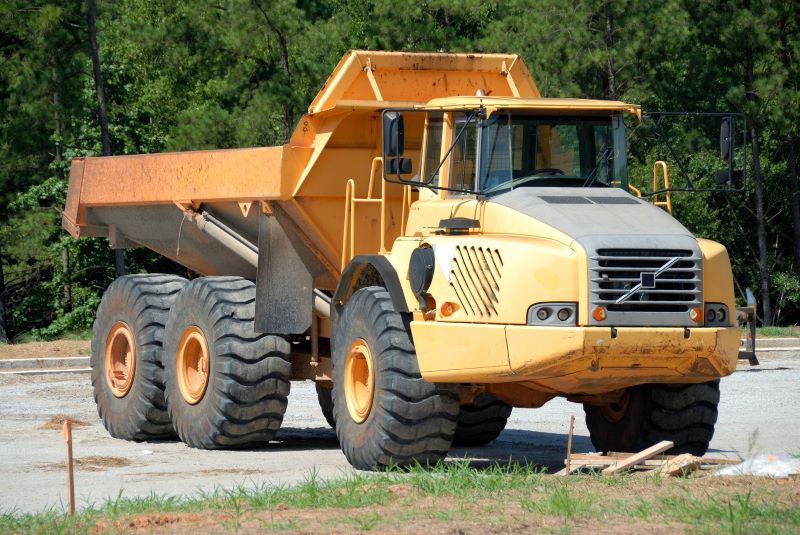
Pile Boring Machine
Pile boring machine is a heavy vehicle used to drill vertical holes into the soil for the installation of bored piles. These heavy equipment is specifically designed with drilling tools, that grabs and removes soil and rock.
Bored piling must always be done by a specialised piling contractor as they have knowledge and experience in the design and construction of bored piles.

Pile Driving Machine
Pile driving machines is a piece of heavy equipment that is used to drive piles in the construction of piled foundation. There are different types of pile drivers such as diesel hammers, hydraulic hammers and vibratory pile drivers.
Steel H piles, precast concrete and timber piles can be driven into the ground using a pile driver. This is achieved by applying a force (large weight through pile hammer) through impact blow to the top of the pile or hydraulically. However, the pile needs to be checked as to whether it can withstand the applied force (i.e, concrete may start cracking and needs additional reinforcement).
Cherry Pickers
Another type of heavy equipment is a cherry picker which is also a hydraulic crane with a railed platform that can be raised and lowered. This is commonly during constriction, or for maintenance and repair work in warehouses.
They are versatile and allow operative to work in areas where access may be difficult (working at heights).

Breakers
Another type of heavy equipment is a breaker which is a powerful percussion tool used for breaking tough rocks and concrete. The percussion tool and be fitted to excavatprs and is useful in areas where blasting and hammering is not feasible.
It is common to see breakers udring the demolisiton of buildings, roads and pavements.
Forklift Truck
Forklift trucks is a very useful piece of heavy equipment that is used to lift and transport materials. It is a common plant used in warehouses and manufacturing and transporting pallets.
They are also used on construction sites and are adequate in tough terrain and is primary used for transporting goods and materials. There are many types of forklifts which are:
- low lift truck
- Telescopic boom forklift
- Stacker
- Reach truck
- Sideloader
- Order picking truck
- Truck-mounted forklift
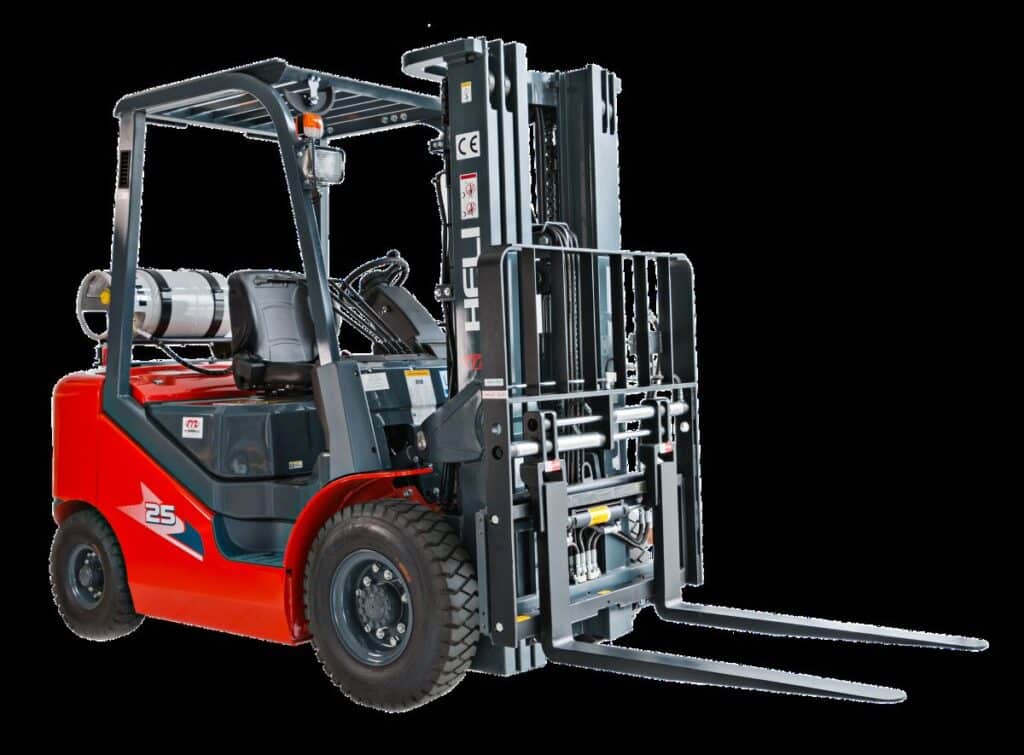
Hoists
Hoists are a type of construction equipment used to transport materials and operatives and is commonly seen on constriction sites. They are generally powered by diesel or electric motors that rotate a drum around which a wire rope in wound but can also be hydraulically powered.

This Post Has One Comment
The detailed descriptions and use cases for each piece of heavy equipment make this guide an excellent resource for both construction professionals and enthusiasts. It not only highlights the significance of these machines but also underscores the complexity and precision required in the construction field.